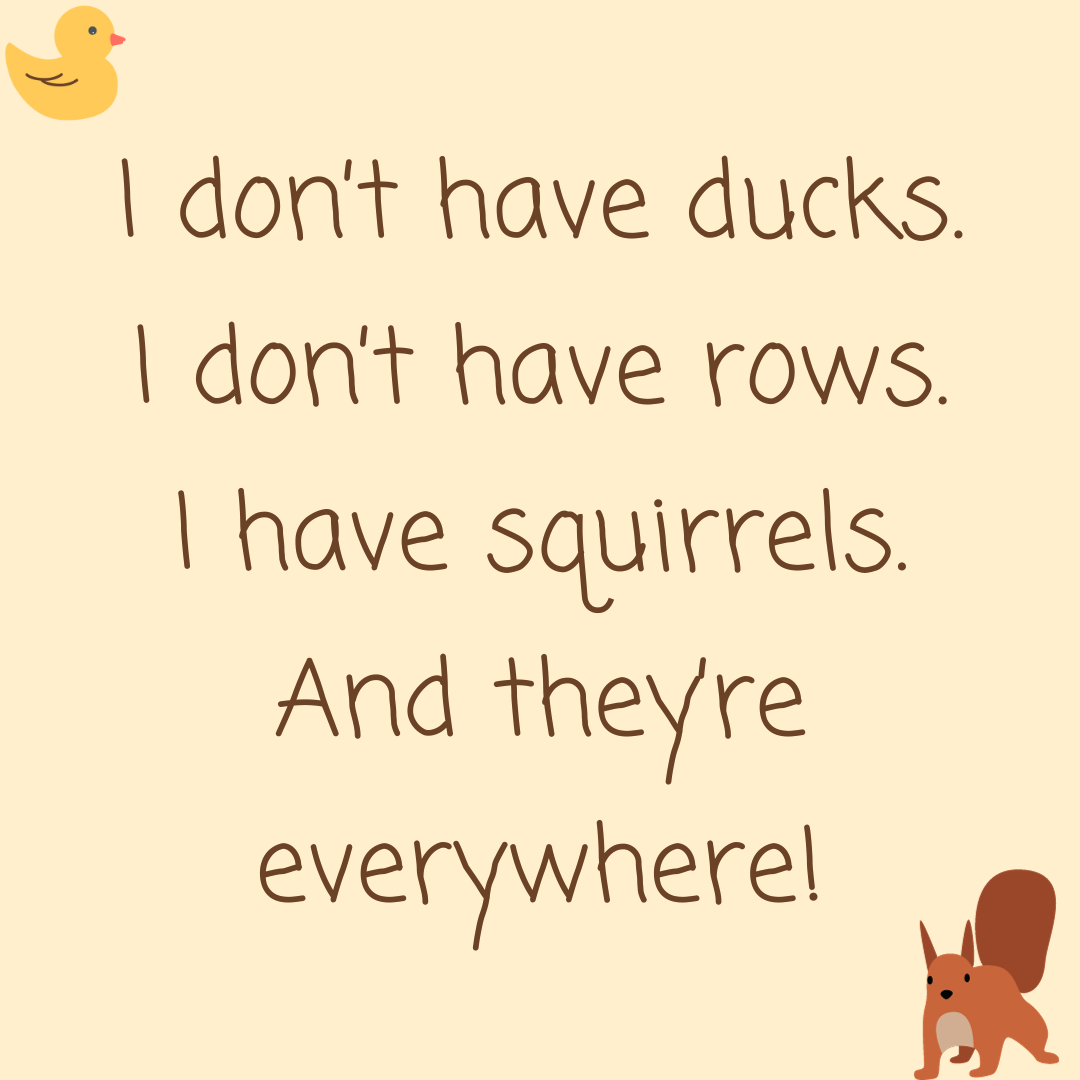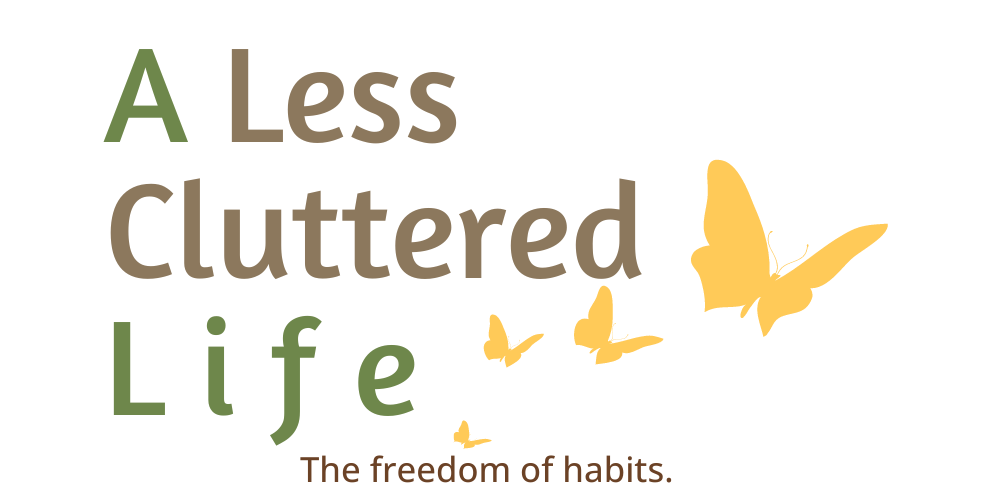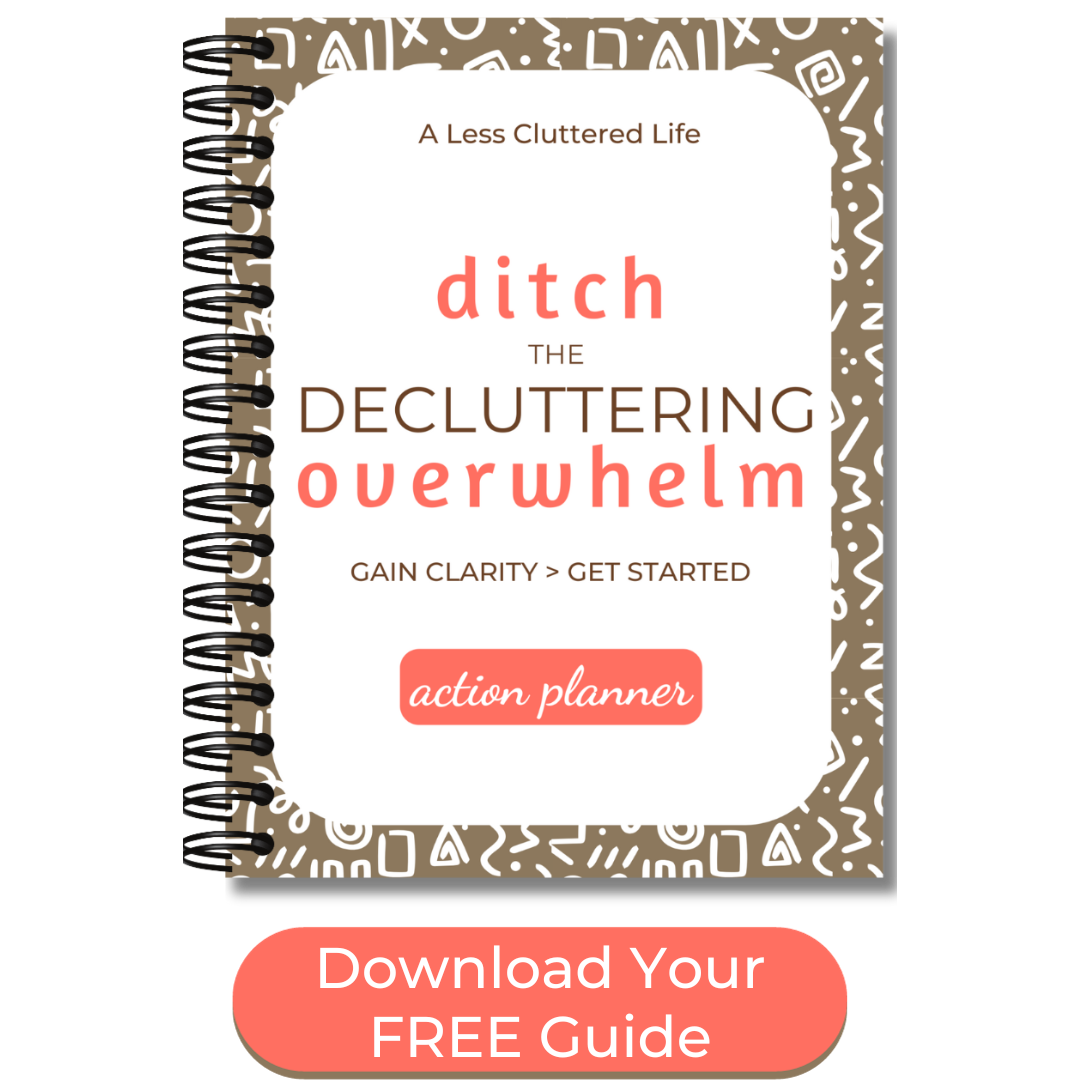|
By Susan McCarthy Does the clutter always seem to return no matter how many times you've tried to get organized? Check out the solutions to four common reasons for clutter and you'll finally be able to stop organizing your house over and again. As an adult, I lived with my parents so I could help my mother who’d had multiple strokes on top of a host of other health issues. I lived in an 8’x12’ bedroom, ample space for a bed, dresser, desk, and a bookcase or two. Only I had two dressers (handed down from my father), a bed, a nightstand, a two-seater couch (from when I had an apartment), a hope chest, two shelving units, a desk and chair, a computer desk, and a whole lot of boxes filled with stuffed animals and books and I-don’t-remember-what. If you’re wondering, “how did she move around all that stuff?” let me tell you that I sidled. My cats could enter the room, jump up on my desk and then make their way around the room without stepping on the floor. It was like a game of “the floor is lava” – for cats. I had so much stuff because I grew up watching my parents keep everything and it seemed normal to do so. But all that stuff left me soooo stressed. One weekend of every month would be spent working my way around the room, straightening everything in drawers, filing papers, and rearranging things so I could fit more and more in stuff into a space that was already over capacity. I was very good at organizing if the goal was to keep everything – no matter what it was – and I never questioned that goal. My parents always said that the problem wasn’t the amount of stuff we had but the lack of enough space to store it all. If we had more space, then we’d be organized. But the problem is, you don’t get more space by buying bins and shelving units and freestanding cabinets. Used properly, they can help you use the space you have more efficiently, but they don’t create space. You know what would have given us more space? Owning less stuff. Why Organizing Your Stuff Won’t Make You OrganizedI was constantly reorganizing spaces that I’d recently straightened. See, with everything fit so tightly in place, if I moved something then everything shifted out of place. Whatever I’d taken out could no longer fit back in its space easily and in my frustration, I wouldn’t put the item away. After all, I would be straightening everything in the room soon, so why make the effort in the moment? Years later, when I became a professional organizer, I saw that this was a common misstep. “I’ll put that away later.” “I’ll sort through that stuff this weekend.” Are you noticing the problem there? I was forever organizing because I’d told myself that reorganizing the same stuff over and again was a normal part of my life. And it was until I took a closer look at what I was keeping. Common Barriers to Staying OrganizedAs it turns out, emptying my parents’ house was a tipping point for me. I saw all the stuff that they’d packed away in boxes and bags. In most cases, once out of sight, the stuff went out of mind. They never used the stuff again. While rolling my eyes at all their craziness, I took a closer look at my stuff. I realized that a lot of the stuff that had been getting in the way of the things I used all the time were things I never used. Yep, I owned things that I did nothing with but organize. And I realized I wasn’t alone. When I became a professional organizer, I was floored when I’d return to someone’s house and see that a space that I’d organized a month earlier was more chaotic than it’d been before I’d worked with them. (I initially thought that hiring a professional organizer meant you were committed to order.) Even though my personal experience showed me that we own far more stuff than we use or enjoy, I realized that my new clients wanted me to organize their stuff, aka, fit it all in. Have you been on the organizing/reorganizing hamster wheel? Check to see if you’re caught up in using organizing methods that just don’t work. Problem One – You Must Shift Stuff to Get to the Things You Want.Now, I’m not talking about going up into the attic to dig out the Christmas decorations or tucking the big roasting pan to the back of that deep cabinet. If you must rustle through things that you use daily or weekly to find the item you want, that space will always be messy, but for the thirty seconds immediately after you reorganize the area for the 12,375th time. The solution is to have less stuff in that space, so you won’t have to sift through numerous items. The more often you use something, the fewer barriers you should allow to access the item. Being organized is all about being able to find what you’re looking for when you need it…and being able to put it away with ease so you can find it later. Problem Two – You Hold onto Stuff Just in Case You Need It Someday.We all have that fear of getting rid of something that we’ll later need. But you know what? People rarely miss the things they let go of. And the things they might wish they still had around? They can usually substitute another item that they still have. Or they replace the item for under twenty dollars. Holding onto stuff can make us feel prepared…and, by extension, organized. But really, you could keep everything under the vague thought that you might need it someday. So, how do you loosen the hold of “maybe”? Ask yourself “why” you think you’ll use something in the future. Be specific. What use will you really have for the item? If you aren’t using something now, how will it be important in the future? And, if you keep everything, how will you easily locate something that you’ve had tucked up in the attic for a decade? The Minimalists, Ryan Nicodemus and Joshua Fields Milburn, created the 20-20 Rule, which means that if you can replace an item within 20 minutes and for less than twenty dollars, it isn’t worth holding onto just in case…it is easily replaced (if that ever becomes the case). And substituting something that you already own is free. Problem Three – Things Don’t Get Put Away Where They Belong.The goal of decluttering isn’t less stuff for the sake of less stuff. Instead, it’s to make it easier to find the things you want when you want them. And for that to happen, things need to get put away. The easier it is to put things away, the easier it will be to find things later. The fewer things that you have stored in a space, the easier it will be to both put things away and to locate them when you want them. If you remember my story from the beginning of this article, I had things so packed into drawers and boxes that when I moved something, everything shifted, making it much to frustrating to put things away. This led to clutter. The solution is having less stuff in a space. Just because you can squeeze in more doesn’t mean that you should. In art, negative space is the space around the subjects of the photograph or painting. You can see what’s important, what the artist wants you to focus on, by the space they create. Having less stuff in a space doesn’t mean you should put excess items into storage. The more things you store, the more difficult it will be to locate what you want (and the likelier that you’ll end up buying or finding a replacement for what you can’t locate). Problem Four – You Don’t Know Where Things Belong.Some items keep getting moved around because they don’t belong anywhere (or don’t seem to). The solution is to decide where you’ll go looking for those things when you need them. Where’s the best place to store infrequently used items like packing tape, rolls of gift wrap, the hummingbird feeder (which I’m currently wondering where I stored for the winter). This involves guessing. If you wanted to find gift wrap, where do you think you’d go looking for it in your house? Eliminate the places that you wouldn’t look (no gift wrap in the bathroom or kitchen) and you’ll be left with a few options. Are there items that share the same category or theme as what you’re trying to find a home for? Would you use the item with other items (so it would make sense to keep them together)? For example, most of the gifts that we wrap in my household are during the Christmas season, so the rolls of paper and gift tags get stored with the Christmas decorations. And since there are rolls of gift wrap in this corner of the basement, any other gift-wrapping supplies for other times of the year might as well get stored there as well. I don’t have a room that I use as my office, but if I did, I might keep wrapping paper there since I have tape and scissors at my desk and I use those things when wrapping gifts. Keep your solution simple and functional. Practical is better than pretty. Stop Organizing. Start Decluttering.If you’re tired of constantly organizing and reorganizing your stuff because nothing stays neat, it’s time to look and see if you have too much stuff. My parents were adamant about holding onto stuff. The longer they held onto something, the more important it seemed. The result is that my brother and I filled four 30-yard dumpsters with stuff. That’s on top of the countless trips to the donation center as well as stuff that could be sold. They used a fraction of the stuff that they owned because they could only access a small portion of their possessions. Remember,
I finally learned that just because I could organize something, that didn’t mean I was organized. Slowly I let go of stuff and created more space at home. And you know what? I discovered there were so many more interesting things I could do with my weekends than spend them rearranging my stuff. More Resources to Help You Stay Organized
0 Comments
Your comment will be posted after it is approved.
Leave a Reply. |
Categories
All
Hi, I'm SusanI'm a former teacher who became a professional organizer (and not because I'm a natural-born neatnik). I live with my husband and fluffy cat on a river in Massachusetts. I crochet, make handmade cards, and love reading young adult novels. Learn more about my decluttering journey here. |
|
Copyright 2024 Susan McCarthy - Susan@ALessClutteredLife.com -
Privacy Policies |
Proudly powered by Weebly

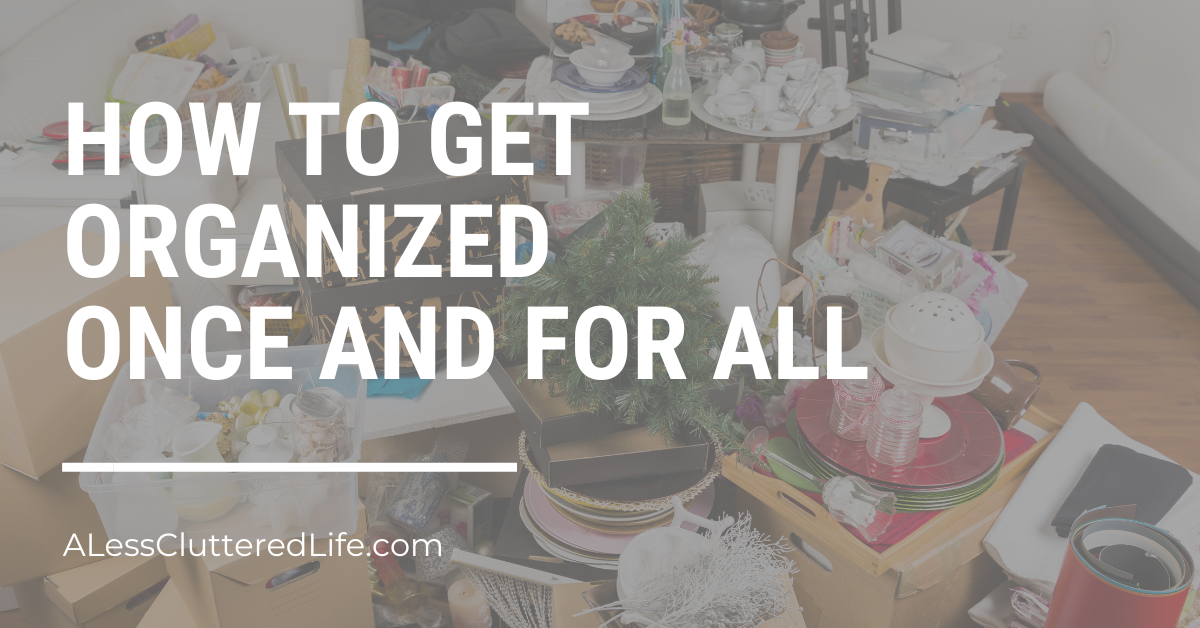
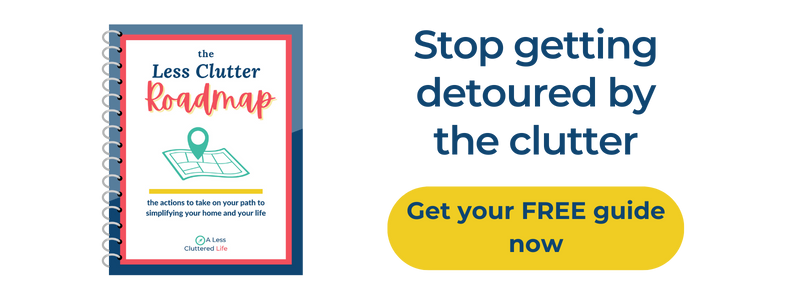
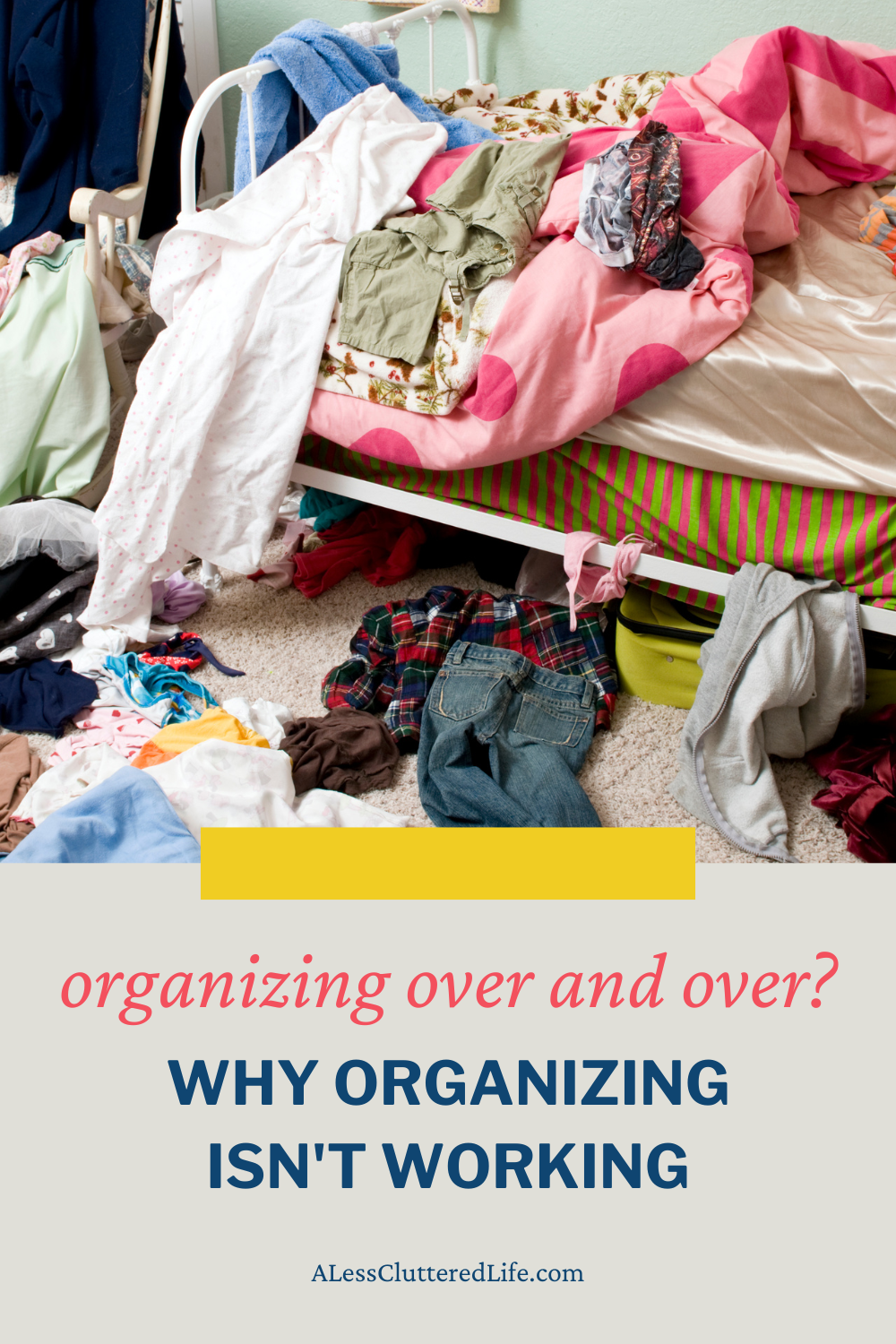
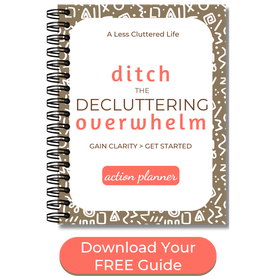

 RSS Feed
RSS Feed
